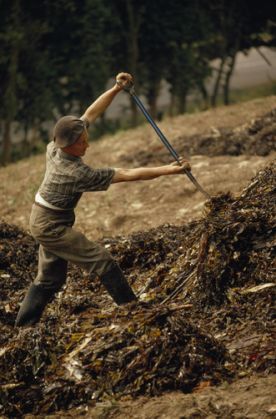The green lettuce seaweed that invaded the beaches on the south coast of the island all summer may in future be taken out to sea on a special barge.
During several weeks in the summer lorries were used at low tide to take the rotting sea lettuce from the high tide watermark and dump it at the low-water mark.
Predictably the seaweed finds its way back to the top of the beach a few high tides later, unless the wind is in the right direction to blow it out to sea. This inefficient and time-consuming system has cost the island £21,000 so far this year.
However taking the sea lettuce out to sea in a barge has its risks too. It will not be popular with local fishermen, and will be very unpopular in France. Jersey and France are only about 25 kms apart at the closest point.
The French had their own sea lettuce problems a few years back when tonnes of the weed was washed up on the beaches and decomposed.
Rotting sea lettuce produces hydrogen sulphide, a toxic and inflammable gas.
It is thought that the excessive growth of sea lettuce is produced by nitrate pollutants on farms that run off into the sea during wet weather.
Sea lettuce is edible if collected properly and in time. It should not be mistaken for the other precious local seaweed called vraic, which was traditionally collected by farmers and used on the land to fertilise the potato fields.












